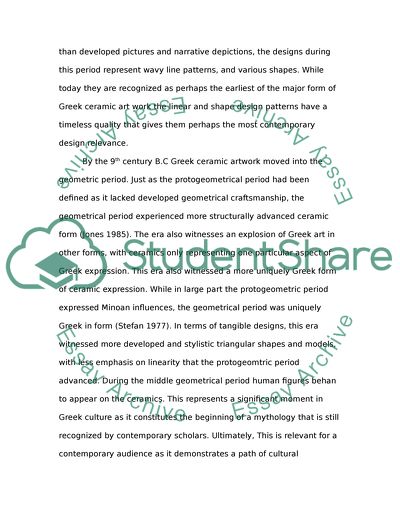Cite this document
(“Ceramic Artwork in Ancient Greece Essay Example | Topics and Well Written Essays - 1250 words”, n.d.)
Retrieved from https://studentshare.org/literature/1425814-ceramic-artwork-in-ancient-greece
Retrieved from https://studentshare.org/literature/1425814-ceramic-artwork-in-ancient-greece
(Ceramic Artwork in Ancient Greece Essay Example | Topics and Well Written Essays - 1250 Words)
https://studentshare.org/literature/1425814-ceramic-artwork-in-ancient-greece.
https://studentshare.org/literature/1425814-ceramic-artwork-in-ancient-greece.
“Ceramic Artwork in Ancient Greece Essay Example | Topics and Well Written Essays - 1250 Words”, n.d. https://studentshare.org/literature/1425814-ceramic-artwork-in-ancient-greece.


